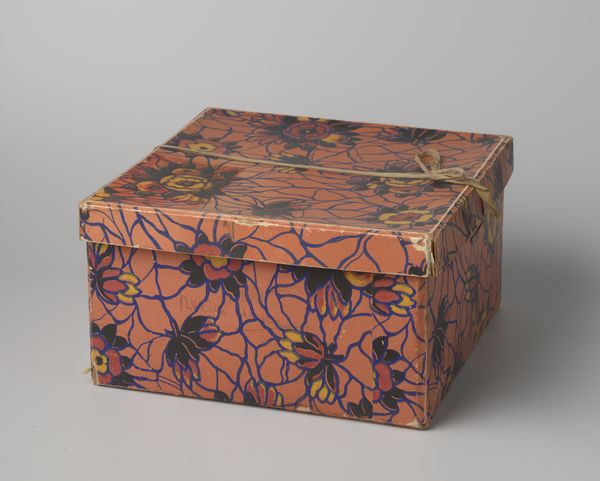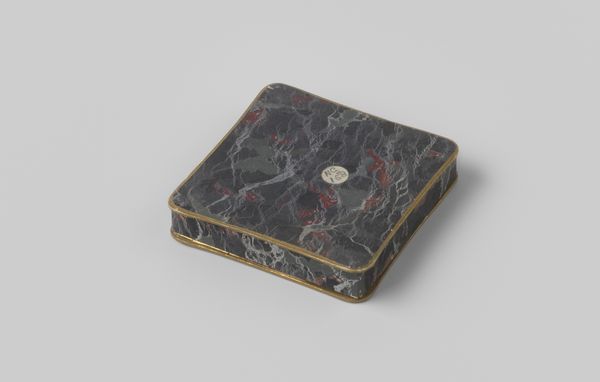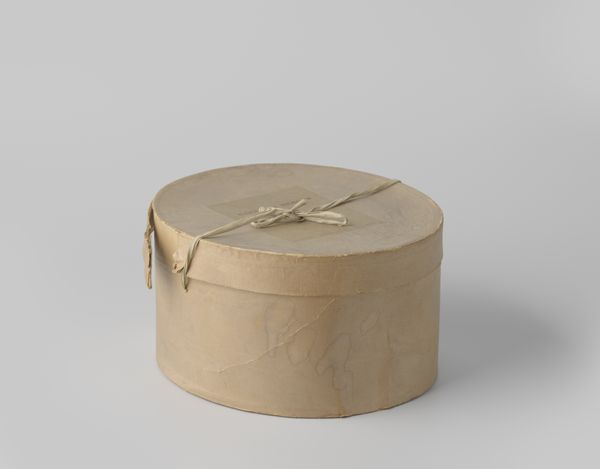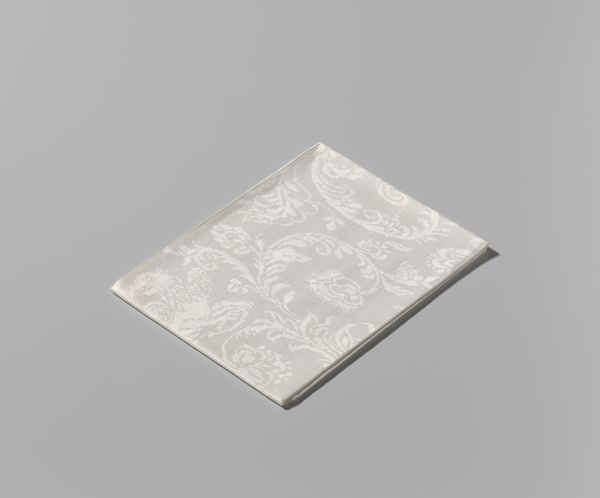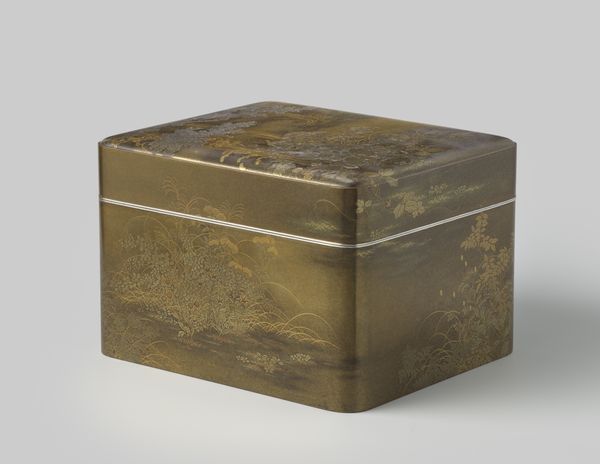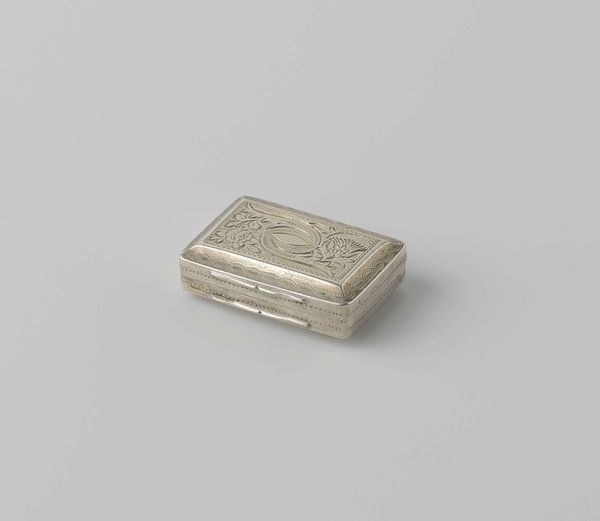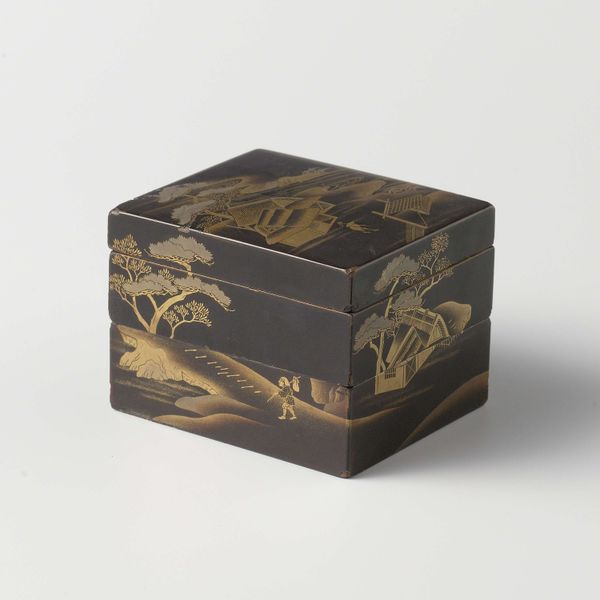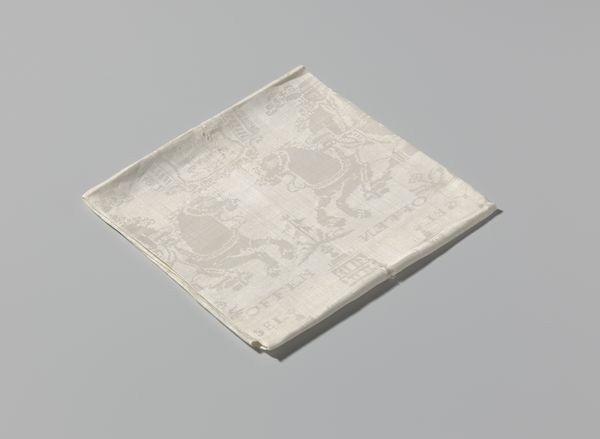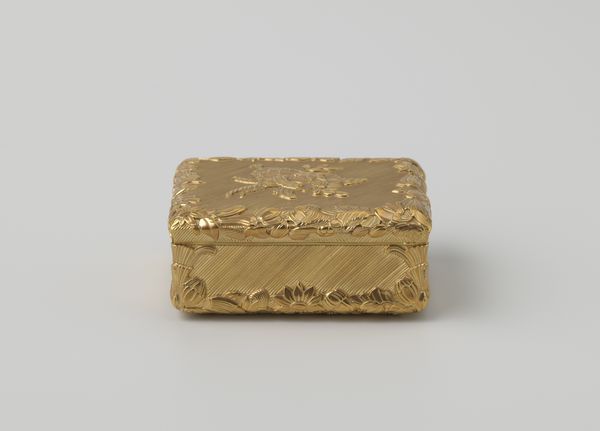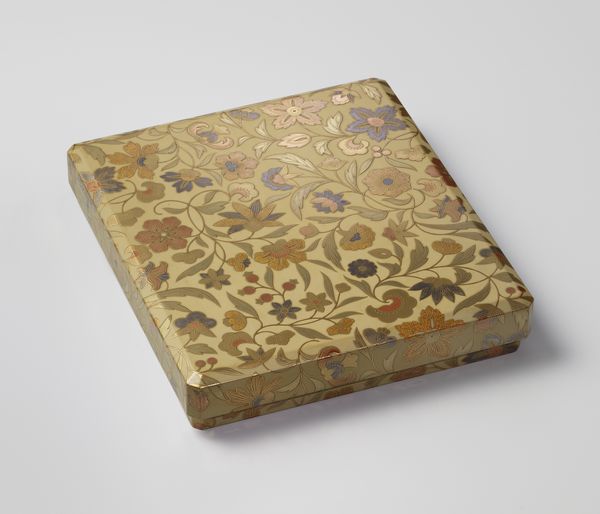
mixed-media
#
mixed-media
#
pattern
#
folk-art
#
orientalism
#
decorative-art
Dimensions: height 5.5 cm, width 16 cm, depth 10 cm
Copyright: Rijks Museum: Open Domain
Curator: The item before us is a shoebox for a pair of children's shoes, created sometime between 1800 and 1900. It employs a mixed media approach to achieve its decorative effect. Editor: My first impression is one of delicate melancholy. The box has a simple, unassuming form, but the patterns covering it, the faded gold on that dark background, hint at something once precious, now aged and softened by time. Curator: It’s a very evocative piece, isn't it? Looking at the orientalist influences in the folk-art style reminds me how globally interconnected even everyday life was becoming in this period. A child's shoebox speaks to these large themes about trade, culture, and the commodification of beauty. Editor: Absolutely. The floral motifs aren't just decoration. They carry a legacy from eastern symbolic language of rebirth, hope, and fleeting innocence. I imagine the shoes inside, signs of growth, mirroring those blooming elements. The entire box serves as a visual poem on the cycle of life. Curator: Precisely. Consider the context in which it was created. Child mortality rates were high during this period. Could the aesthetic delicacy reflect not just a love for beauty, but also a need to make fragile childhood bearable in the face of uncertainty? Editor: I think that’s insightful. Death was ubiquitous, never far from mind. Objects associated with the young carried enormous emotional weight and a concentrated desire to impart beauty into an inherently painful existence. It served to memorialize the joy even amidst such profound fragility. Curator: The survival of an item like this is rare, reminding us of those ordinary lives and domestic settings from generations past. In thinking about the material fragility of the artifact itself and what that means for historical and contemporary readings, it is amazing this still exists. Editor: Indeed, its patterns become an archeological find of human memory. Its very existence suggests layers of symbolic narrative interwoven into an everyday life. It almost begs the question, what memories still lie dormant beneath its surface?
Comments
No comments
Be the first to comment and join the conversation on the ultimate creative platform.
